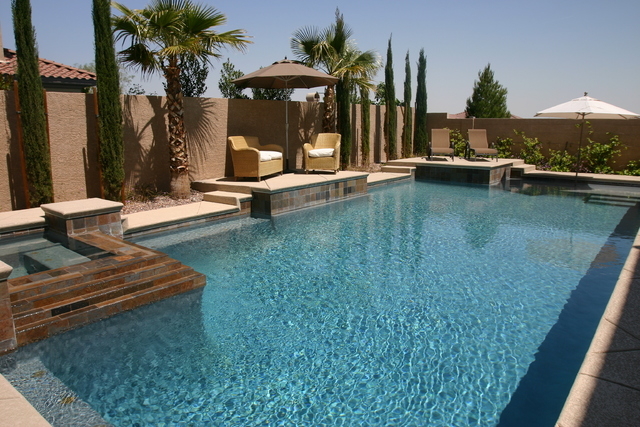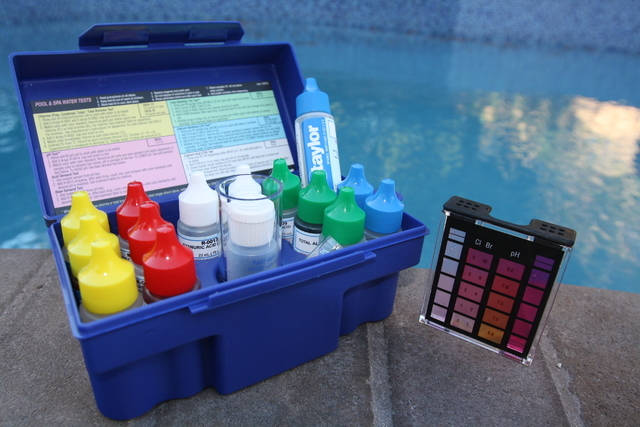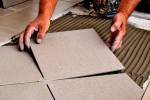Pool Maintenance Made Easy
The joy of owning a pool can quickly be diminished if you are spending more time performing maintenance tasks than relaxing in the soothing water and sipping your favorite beverage.
There are two main components to maintaining a pool: water chemistry and debris removal.
You don’t need a degree in chemistry to maintain the proper water balance, but understanding the properties of water is imperative.
Pool plaster expert Jana Auringer, a board member of the National Plasterers Council, quality control technician for Pebble Technologies and owner of The Pool Lady, provides some insight into the importance of keeping proper water chemistry or, as she prefers to call it, “water balancing.”
“It’s not just about adjusting pH and chlorine levels,” Auringer said. “There are other elements in water that require evaluation.” She suggests using the table on Page 7D for good water balance.
“When the ideal ranges are maintained, there will be proper sanitation for safe swimming and proper balance to prevent equipment and interior finish problems,” said Auringer, who serves as an independent consultant on swimming pool plaster issues in Texas, Oklahoma, Louisiana, Arkansas, Kansas, Florida and Missouri.
However, in order to test for these elements you need the proper test kit. Auringer recommended a complete test kit that is capable of performing the following tests: free and total chlorine (which will define the combined chlorine level), pH (acid demand, base demand), total alkalinity, calcium hardness and cyanuric acid (stabilizer).
Once a week might be OK during the winter and low-use months, but during the hot summer and active swim season, more frequent testing is required.
Auringer, who has more than 25 years of experience resolving plaster issues, said there are numerous contributing factors that will cause changes in water chemistry. Large groups of swimmers, pets using the pool, infants and young swimmers, as well as exterior influences such as weather, landscaping and fertilizers, are all contributors affecting water balance and possible discoloration of the interior surface.
“Not all pool chemicals are created equal,” she warned. “Each type of chlorine will differ from manufacturer to manufacturer, and some chlorines have a stabilizer included. An overabundance of stabilizer can cause damage to the interior finish and give false total alkalinity readings.
“Another error pool owners make is to place chlorine tablets directly in the skimmer or pool pump. When the system is off, the chlorine will continue to dissolve, sending a surge of high-concentrated, low-pH chlorine to the return lines. Over time, the high dose of chlorine may corrode the equipment or the interior finish at the return site.”
As for apps, Auringer hasn’t found a specific one that delivers all the necessary data for water balancing.
“No two pools are the same; often it comes down to trial and error,” Auringer said. “If you continue to have water balancing challenges, seek information from the manufacturer’s website or help desk.”
For those intrigued by chemistry and desire more in-depth knowledge on water balancing, Auringer suggests utilizing the Langelier Saturation Index. “It can be a little intimidating and requires some math, but there are websites with calculators,” she said.
These are often found as apps, but it is important to note that calcium hardness is used for the LSI, while some testing is for total hardness, which is not sufficient for the LSI.
Unquestionably, one of the most frustrating and misunderstood maintenance chores challenging pool owners is dealing with calcium buildup in the pool and on tile, stone and rock work.
Calcium deposits originate in several ways: from mineral deposits as a result of water evaporation, commonly found in raised areas under and around water features; leaching through retaining planter walls that are not properly sealed; and from calcium precipitating onto the pool surface as a result of a high pH event (adding water to the pool, rain or excessive shocking with a high pH chlorine) or when calcium exceeds the saturation point in water.
“Proper water balance will go a long way in preventing calcium buildup,” Auringer said, “as well as the regular use of a stain preventative or sequest product.”
DEBRIS REMOVAL
It’s inevitable that debris and organics will enter the pool. Organics such as leaves, flowers and living matter will contribute to the difficulty of maintaining proper water balance.
“Removing debris and organics is important for several reasons,” Auringer said. “Debris such as dirt can stain the interior and organics will rapidly deplete the chlorine.”
Most pool owners are familiar with in-floor cleaners and automated pressure or suction side cleaners. While these cleaners perform an excellent job, they are dependent on clean filters, pool pumps and skimmers to operate properly at efficient run times based on the use of the pool as well as seasonal temperatures.
Another option for debris removal is the robotic cleaner. Robotic cleaners have been around for some time, but the evolution of the units might just be worth looking into.
The latest generation robotic cleaner from Zodiac, the Polaris 9550 Sport, sounds more like a high-performance vehicle or ATV rather than a pool debris remover. Its features and performance capabilities will certainly have you considering buying one for your pool.
A test run of the unit found it to be very easy to assemble and operate. It appears the designers have taken some insight from Polaris’ popular off-road vehicles and incorporated those elements into the cleaner, including four-wheel drive and the ability to climb pool walls and clean waterline tile.
If the 9550 Sport flips over and lands upside down on the bottom of the pool, it rights itself and continues to clean.
Akin to a home canister style vacuum cleaner, the 9550 Sport plugs into an electrical outlet and has a canister with a debris filter inside the unit. A sensor light warns when the filter is full.
The unit can run via the program or by remote control. The motion sensor remote control is ideal for steering the unit over a precise path and to troubled areas.
The robotic cleaner is an independent system not connected to the pool equipment. This is advantageous in that the unit has its own motor and does not draw power away from the pool pump or cause resistance in water flow.
It also has its own debris filter that is easily removed and cleaned. In addition, it runs on low-voltage power that minimizes energy use and can be used even when the pool system is off. The 9550 Sport comes complete with a lightweight transport caddy.
The price of robotic cleaners ranges from $1,000 to $1,500.
“While the robotic cleaners are efficient in gathering the debris, if the debris is not cleaned from the unit, it will continue to deplete the sanitizer from the pool water,” Auringer said. “It is necessary to monitor the sanitizer level during these periods and adjust the chlorine level as needed.”
Joseph M. Vassallo is an internationally acclaimed and award-winning pool designer. President of Paragon Pools, Vassallo has co-authored five pool design books and is currently a featured designer on HGTV.com. He can be reached at 702-400-0679 and www.paragonpools.net.




























